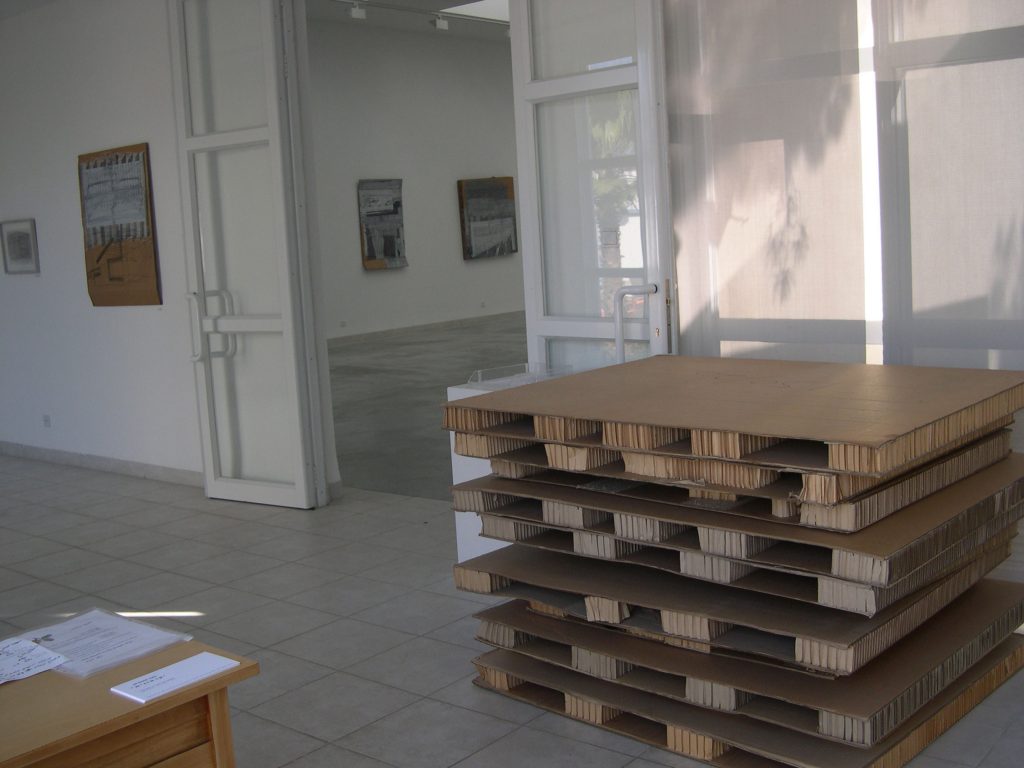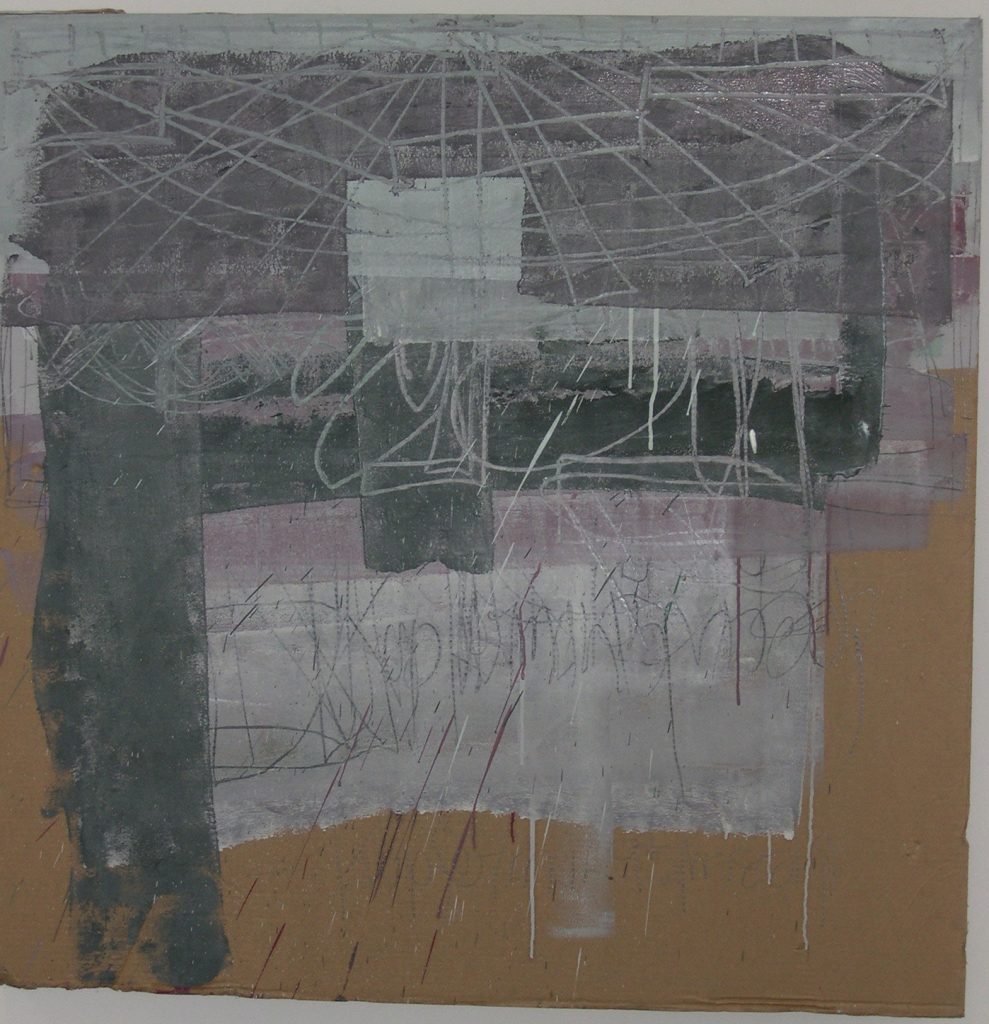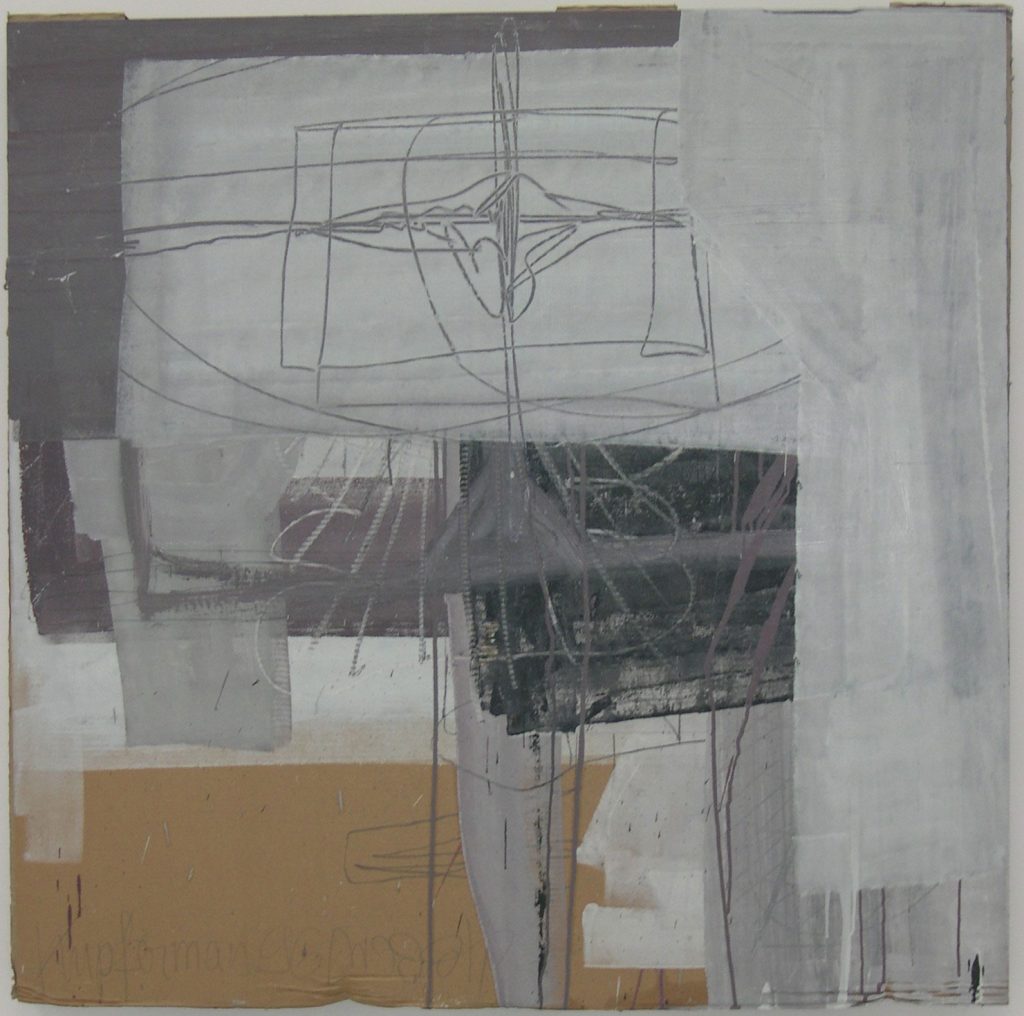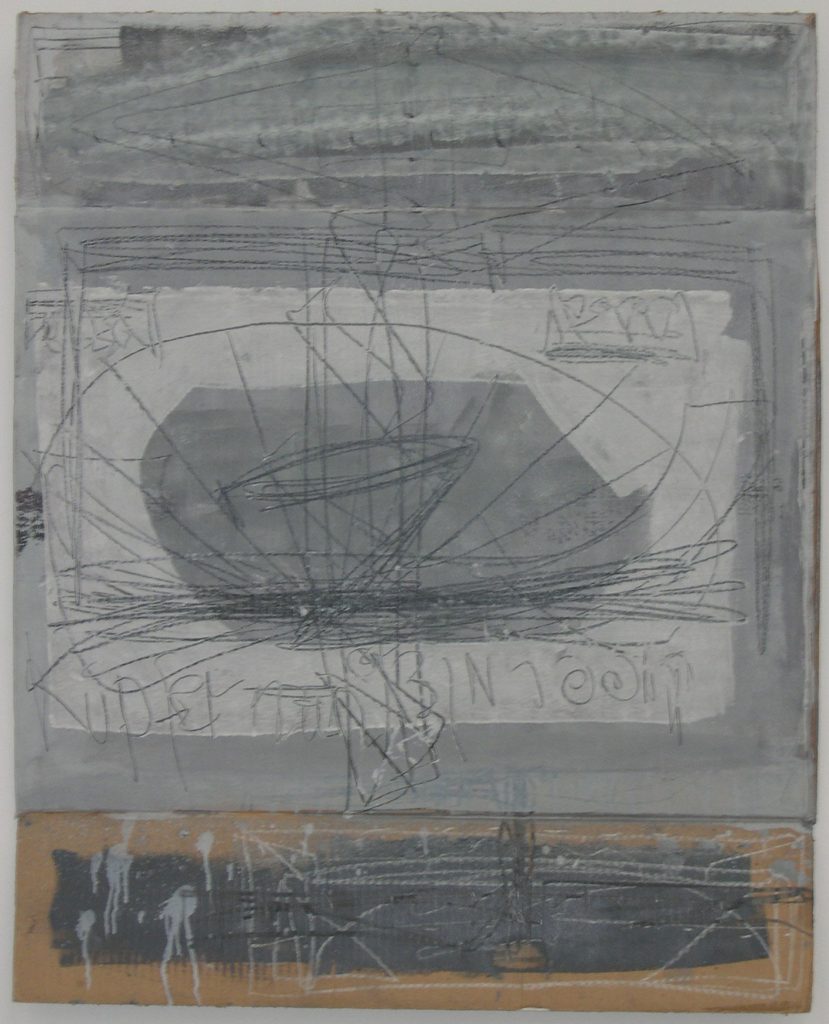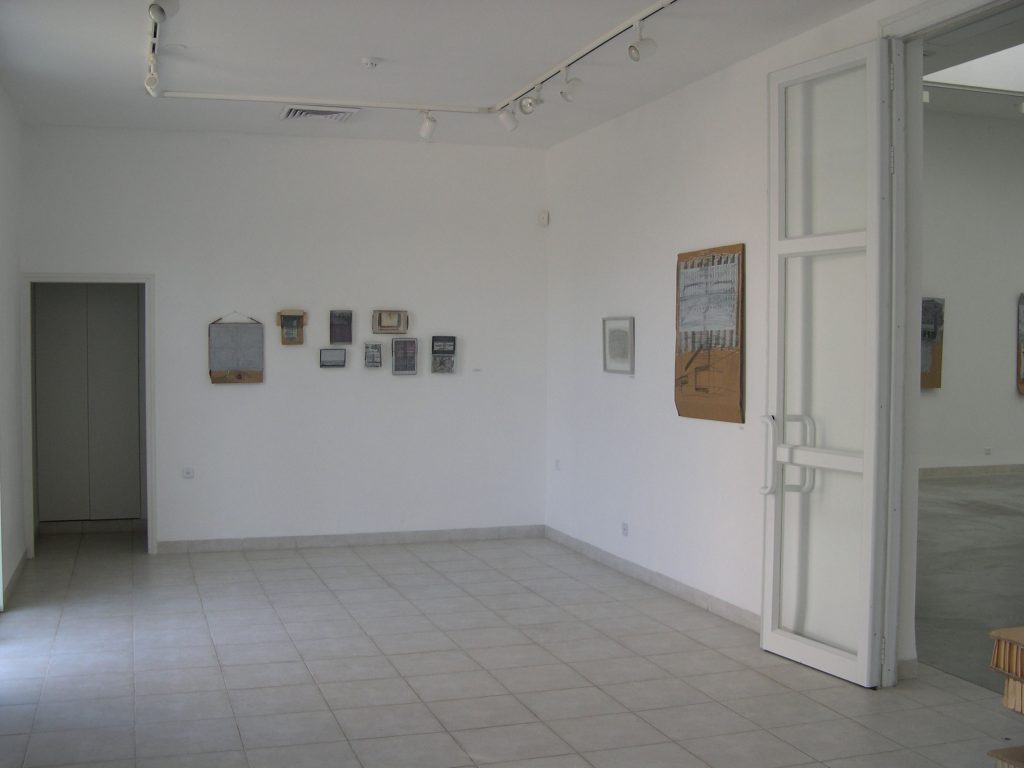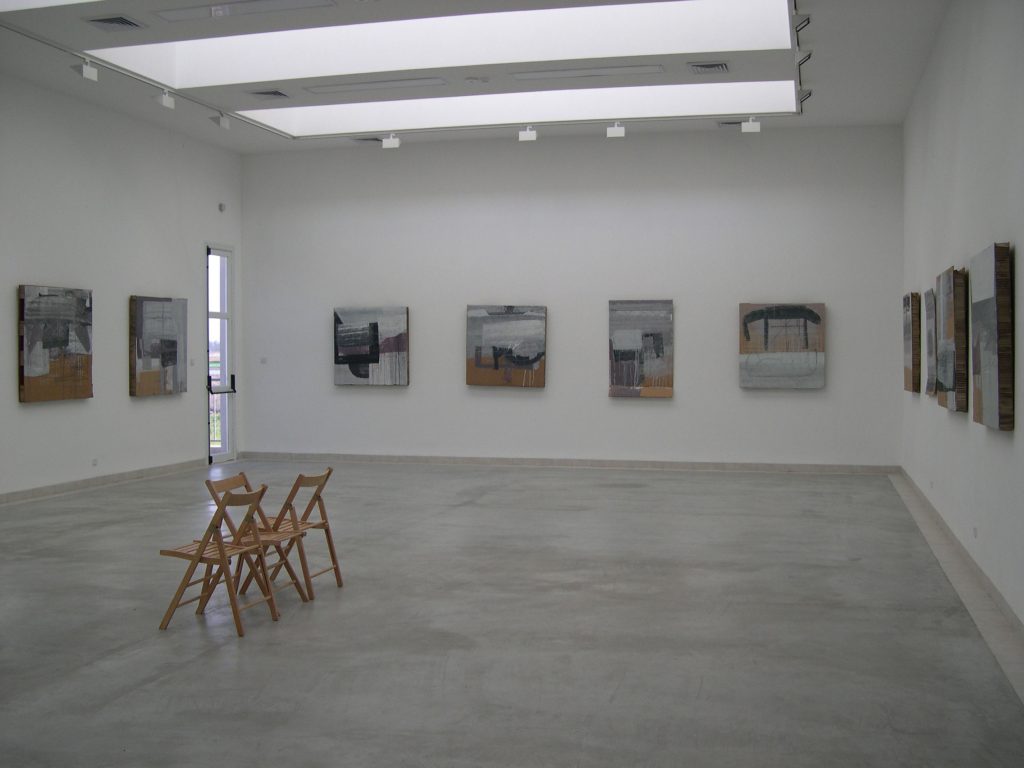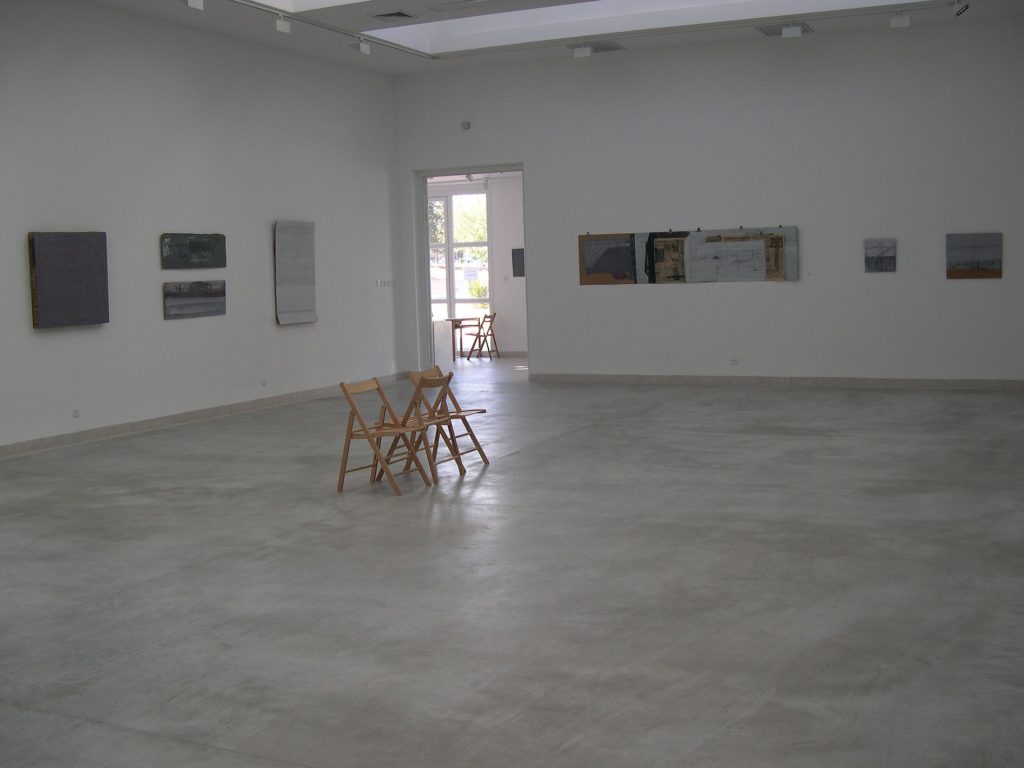Kupferman’s “Cardboards”
(February – May 2004)
Just as the random sketches in the scratch pads evolved to become drawings in albums, and these developed into the independent “Works on Paper”, with double and triple signatures by the artist confirming their seriousness and complexity, and testifying to their status as significant works, parallel to the paintings on canvas (and on other surfaces as well), so did Kupferman’s “Cardboards” develop from both categories – drawings and paintings – to emerge as a new category. This distinctive body of works accompanied his art as of 1994, during the last nine years of his life.
Kupferman liked craft, craft combined with games, or more accurately, games whose validity and justification comes from craft, from handiwork: the act of drawing and erasing with “a free hand” or with a ruler, cutting paper, folding and gluing it, signing a work in the making and signing it again when it is complete… a sensuous, complacent, serious diversion, that eventually required that he carry out “a checking procedure”, Kupferman’s own term (somewhat a-la Aroch, yet very different…): you perform such and such deeds and “acts” and “things”, examine options, achieve a result, evaluate the outcome. His confirmation is the “seal of approval” for the responsibility he accepts (and assumes) for a list of “things” he has done, including things that have happened to him – some “work accidents” – in the course of work, or to put it in his own words: “anything that has been encountered incidentally and found worthy”.
His love of concrete materials provides him with enticing encounters with materials: quality paper for drawing and newspaper, a demanding and obedient material that enables – from his perspective, calls for – a game of side A versus side B: one in comparison with the other, one in contrast to the other…
This was one source en route to the “Cardboards”. Another source was the cardboard (any piece), that enabled him to manipulate the material that yielded other materials and other formats. At first they were “unassuming” and eventually, once qualified to receive further “treatment” drawing, and signs of painting, they became gradually more “assuming”.
Kupferman’s curiosity about cardboard led him, exactly ten years ago, to the backyard of “Tivall” plant, to the stacked up used cardboard surfaces. These mostly square surfaces, (a format Kupferman did not normally use) are in fact double-decked surfaces, strange sandwiches of sorts. Kupferman chose side A for work and side B for hanging.
These “Cardboards” suggest transience, roughness, flexibility and softness. Their familiar materiality qualifies them to be concurrently, in differing dosages and changing qualities, paintings as well as drawings. This is not only a matter of an encounter between Painting and Work on Paper: the sequence of work Kupferman adopted in the “cardboards” breaches all the “sequences of work” he had developed in painting and work on paper, denying every procedure and convention that had formerly enabled neighborly relations between line and splash, black and white.
Y.F.
February 2004
